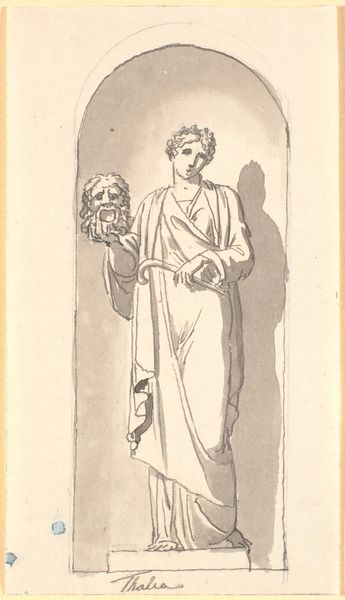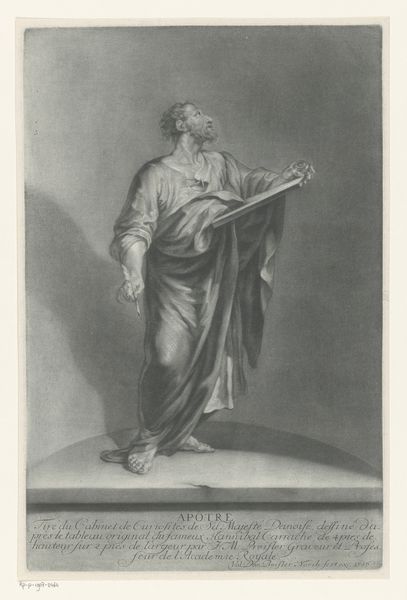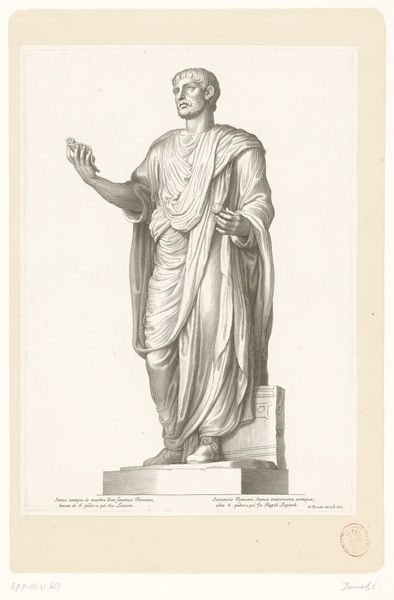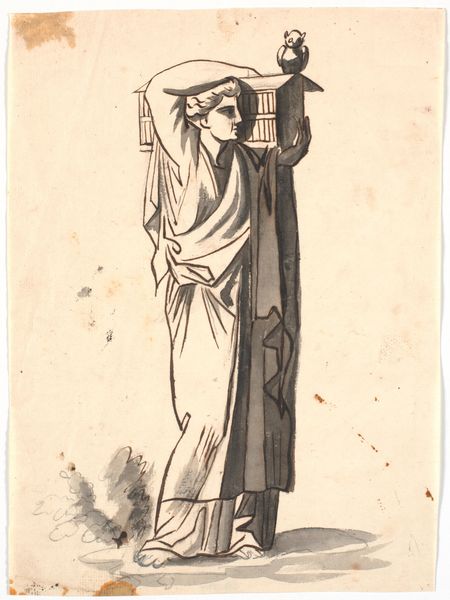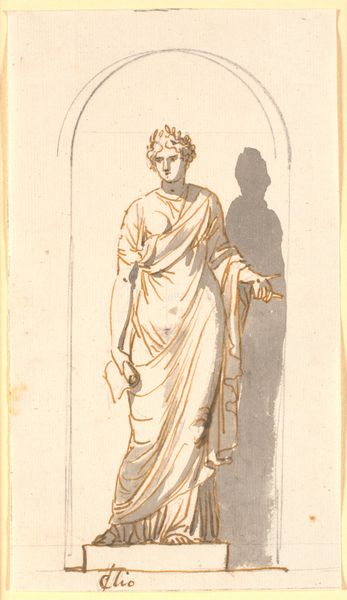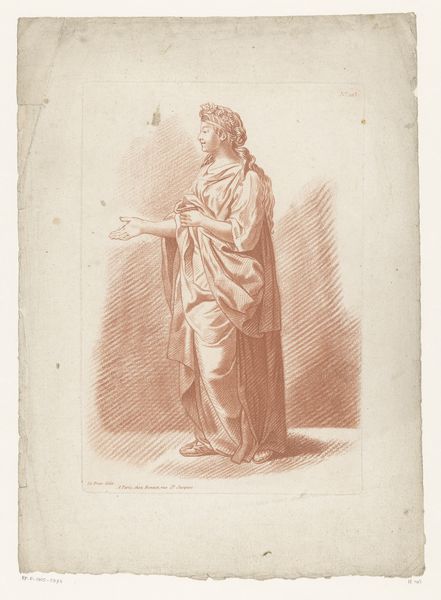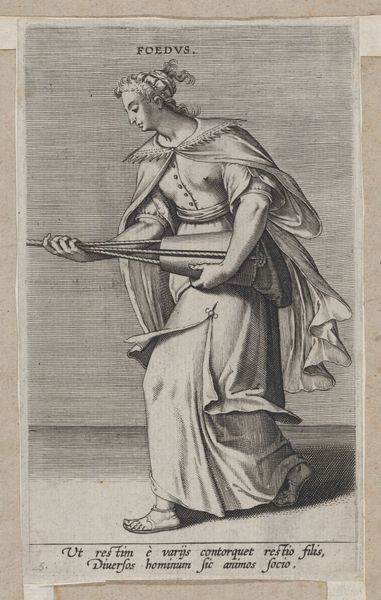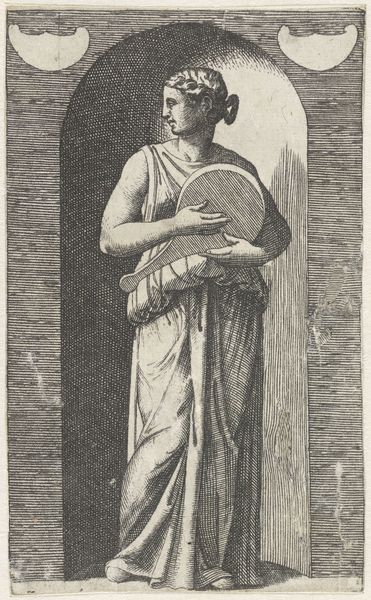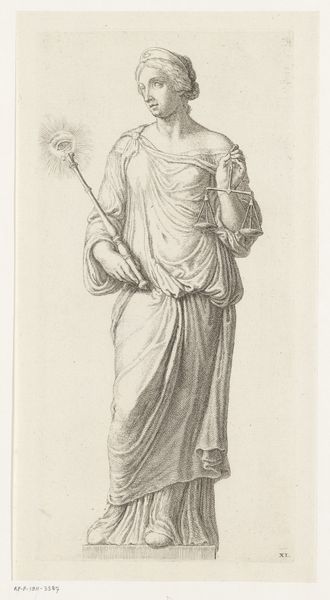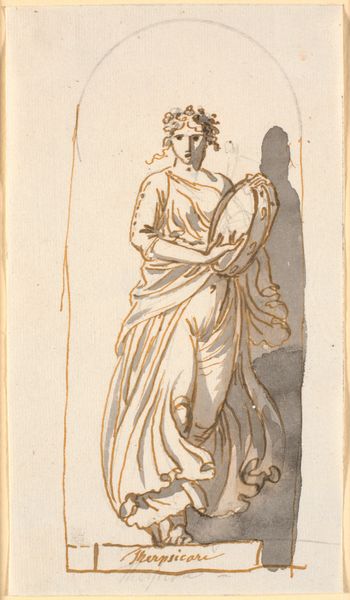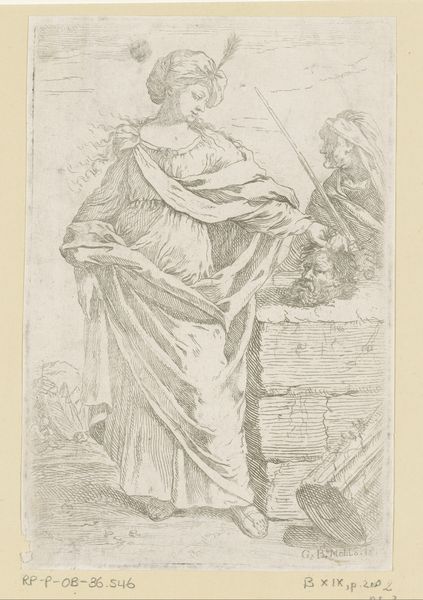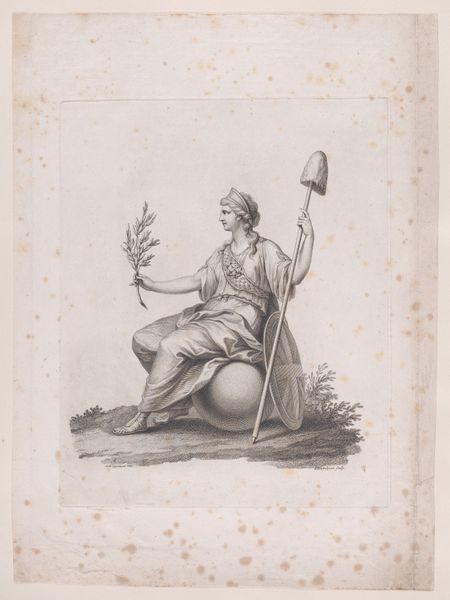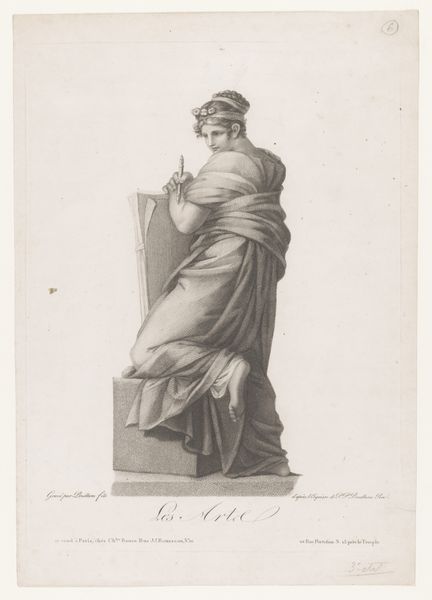
drawing, ink, pencil
#
portrait
#
drawing
#
neoclacissism
#
pen sketch
#
greek-and-roman-art
#
figuration
#
ink
#
pencil
#
history-painting
Dimensions: 213 mm (height) x 114 mm (width) (bladmaal)
Editor: This intriguing drawing is called "Euterpe as statue in a niche," made between 1743 and 1809 by Nicolai Abildgaard. It seems to be pencil and ink on paper. It gives the impression of a classical sculpture study, but somehow also unfinished. What catches your eye in this piece? Curator: Well, it's fascinating to consider this work in terms of its material conditions. Abildgaard's choice of humble materials – pencil and ink – challenges the grand aspirations often associated with neoclassical sculpture. Editor: In what way? Curator: Think about the accessibility of drawing materials versus marble, the labor involved, the cost. A drawing like this allows for experimentation and mass production of ideas in ways a monumental sculpture wouldn't. The artist, therefore, engages in this material process. Editor: So you see it as a conscious choice to engage with the goddess Euterpe, the muse of music, but in a way that democratizes artistic expression? Curator: Exactly. By using these readily available materials, he circumvents the traditional patronage system that dictated artistic production. It makes us think about the social context of art making. Who has access? What kind of labor is involved? It challenges this sort of 'high' art as disconnected from the labor that produced it. Editor: That's an interesting way to look at it. I had just considered it from the traditional Neoclassical point of view! Now I see it also engages with broader themes of artistic production and consumption. Curator: Right, considering it this way we move past just appreciating its form, we examine its roots. It also encourages a closer look at the relationship between materiality, meaning, and accessibility in art.
Comments
No comments
Be the first to comment and join the conversation on the ultimate creative platform.
